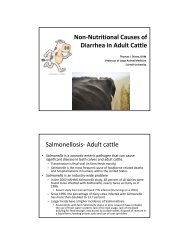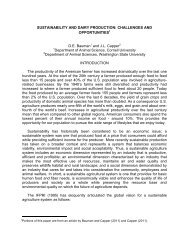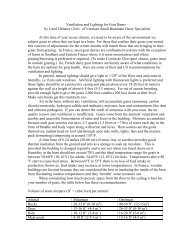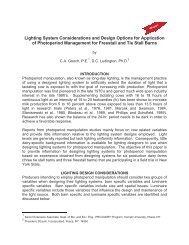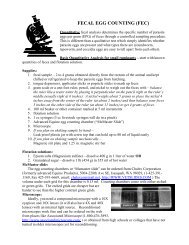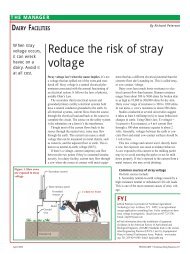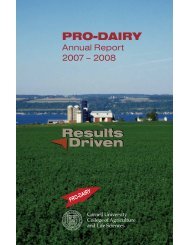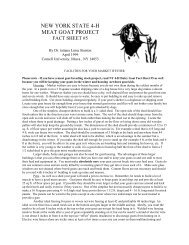1 GOAT SEMEN COLLECTION AND PROCESSING BY DR. LOUIS ...
1 GOAT SEMEN COLLECTION AND PROCESSING BY DR. LOUIS ...
1 GOAT SEMEN COLLECTION AND PROCESSING BY DR. LOUIS ...
Create successful ePaper yourself
Turn your PDF publications into a flip-book with our unique Google optimized e-Paper software.
hemocytometer (available from almost any distributor of laboratory supplies), or by<br />
photoelectric colorimetry.<br />
The concentration of the ejaculate is a function of several parameters. They include<br />
the degree of sexual preparation of the buck, the age of the buck, the time of year the<br />
collection is made, the amount of sexual rest before collection, the health of the buck, his<br />
nutritional state, inherent sperm storage, and the production capacity of the buck.<br />
Most of the factors can be controlled by employing good management practices. The<br />
ability of the buck to produce sperm (in the testes) and store sperm (in the epididymis) can<br />
be assessed to some extent by palpation and measurement of the testes and epididymis.<br />
In bulls, these measurements serve as a good predictor of sperm output, and it is<br />
reasonable to assume the same is true for the buck.<br />
Since it is well known that there is a direct relationship between the number of sperm<br />
inseminated and fertility, it is important that concentration estimates are determined<br />
accurately. An over-estimate may result in over-dilution of the sperm and consequently<br />
reduced conception rates.<br />
As mentioned before, the total sperm harvest is determined by multiplying the<br />
ejaculate volume times the concentration. It is the total number of sperm collected that is<br />
the important semen quality parameter. The average buck ejaculate usually contains<br />
between 2 and 9 billion sperm cells. Between March and August, at Northern latitudes, the<br />
volume of ejaculate is usually low (0.4 to 0.6 ml), which concentration is relatively high (5 to<br />
9 billion sperm/ml). During the breeding season, the reverse is usually true; volume may<br />
range between 0.8 and 2.0 ml and concentration may range from 2 to 6 billion sperm/ml).<br />
VOLUME<br />
29



